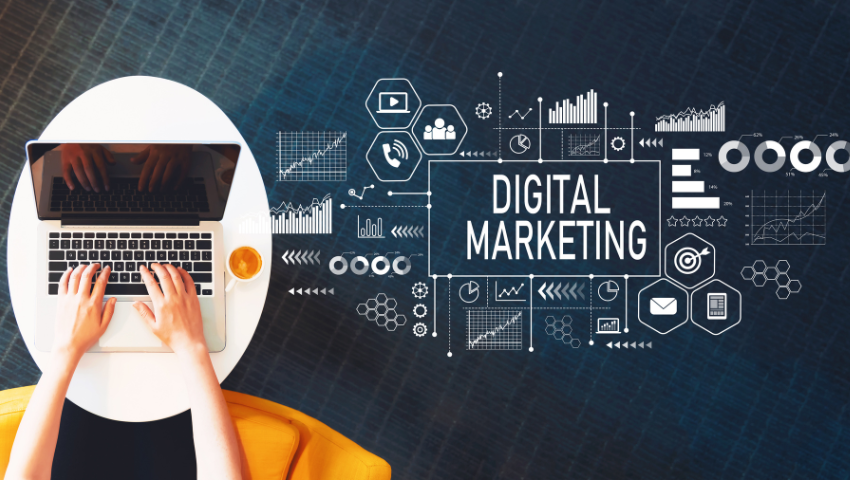
In this article, we will analyze the importance of digital marketing and how it varies from traditional marketing methods. With the use of some data, we aim to address the critical statement: whether digital marketing is supposed to replace traditional marketing or not. We live in an information age where “digital marketing” is crucial.
Various terms, including internet marketing and online marketing, know the selling of goods and services online. Traditional analog marketing and modern digital marketing are the two primary types of marketing tactics. They are tactics used for information gathering, company sales, advertising, and public communication.
What Exactly Is Traditional Marketing?
Traditional marketing refers to promotions or advertising that do not use the Internet or other digital media. This category includes billboards, print advertisements, TV commercials, newspaper ads, radio, and telemarketing. Traditional marketing, as the name implies, has been around for millennia and is the old-fashioned marketing style.
Is digital marketing the future?
Prior to ten years ago, newspapers, magazines, specialized books, and television were the only sources of information. Accessing information via personal computers and mobile devices got easier as technology advanced and networks flourished. Using search engines such as Google will make discovering the information you want easier. But with times changing, we all wonder how marketing will change.
The concept of “network development” gave birth to digital marketing. If you operate a business, distributing your expertise can help you contact people worldwide. As a result, customers began to base their purchases on information acquired on the Internet rather than traditional media such as newspapers. As a result, digital marketing has become a need for almost all companies and businesses.
Difference between digital marketing and traditional marketing strategies
Magazine and other media advertising, such as television commercials, have always been used in marketing techniques to promote new goods and services. Even if the consumer can access the firm’s information, communicating the customer’s demand to the company may take time and effort. On the other hand, by evaluating word-of-mouth, social media, and big data in digital marketing, we can discover what clients genuinely require and how they feel when utilizing that product.
Based on this data, businesses may evaluate their product production, sales strategy, advertising content, and approach. Engaging with customers and consumers online in a strategic way by utilizing digital technology and media brings you more revenue. Because of the extensive usage of digital devices such as smartphones and the Internet, digital marketing approaches and tactics are now frequently employed in marketing.
How will marketing change in the future?
The primary mediums used in digital marketing are websites, search engines, social networking sites, emails, and videos. Some strategies include site advertising, email marketing, online catalogs, content marketing, SEO, and social media marketing. The key to Internet marketing is determining how to persuade more recurrent and potential customers to utilize Internet media, eventually leading to increased sales growth.
There were many characteristics that conventional marketing lacked, and the number of marketing actions that may be carried out in line with specific aims is expanding. If any business wishes to sell more things in the future, it will have to utilize digital marketing. Digital marketing in the future will be developed to assist companies in operating more effectively and providing better services to their customers. There is no doubt that economic progress improves the quality and ease of our lives. Digital marketing will become increasingly important as time goes on.
Types of digital marketing
Social media marketing: Post or spread advertisements on Twitter or Facebook
Email marketing: Advertise and send emails
App marketing: display ads between games
SEO marketing: Increase the number of site visits by making it appear higher in search engines such as Google
Video ads: Show ads between videos
IoT marketing: Collect data from home appliances connected to the Internet and use it for advertising
Pay per Click: Pay only for clicks on ads
Listing advertisement: A kind of Pay Per Click. Ads that appear at the top of search engines
Banner ads: Image advertisements displayed on websites, etc.
Affiliate advertising: Pay-per-performance advertising where advertising costs are incurred only
Characteristics of digital marketing
Let us now look at the unique characteristics of Internet marketing that do not exist in traditional marketing.
Effectiveness measurement
Everything in digital marketing can be monitored, including the number of users, click volume, and pricing. In the case of a physical store, we can predict daily sales but not the number of consumers or their interests. However, if it is visible on the website, it is simple to measure without overlooking factors like the number of visits and the most popular commodities.
A sense of urgency
Online digital marketing aids in the speedy dissemination of information. A well-known celebrity writing on Twitter will receive hundreds of likes and retweets in less than a minute, allowing people in the country and worldwide to hear about breaking news immediately.
So is the phrase digital marketing supposed to replace traditional marketing accurate?
Digital marketing allows for a full grasp of the website visitor data and views for the firm. You may rapidly determine client reaction by understanding the browsing length, user count, number of visits, and so on in real-time. So yes, it’s true when we say digital marketing is supposed to replace traditional marketing.